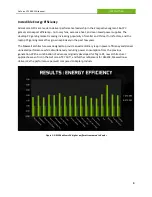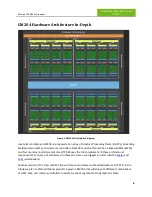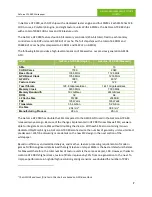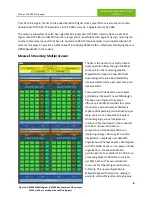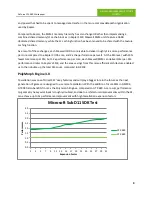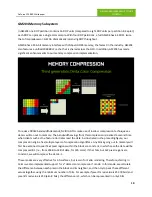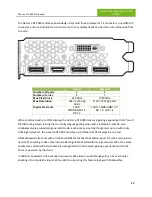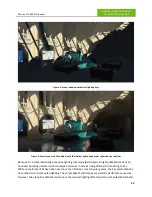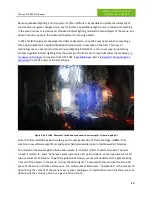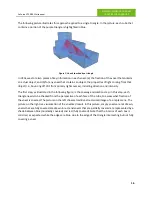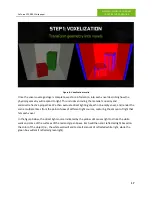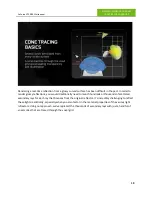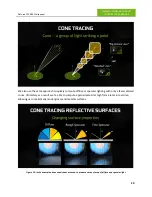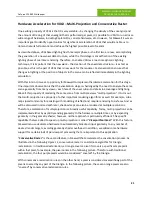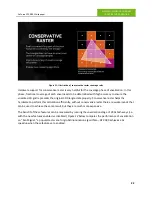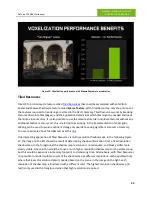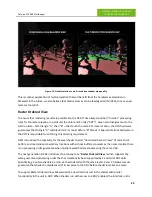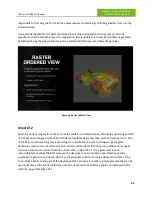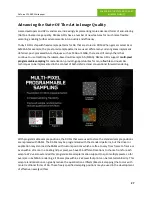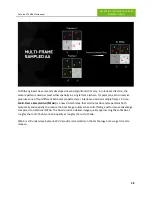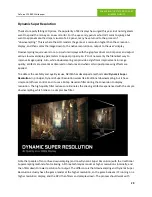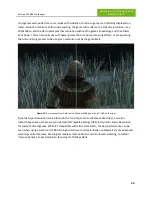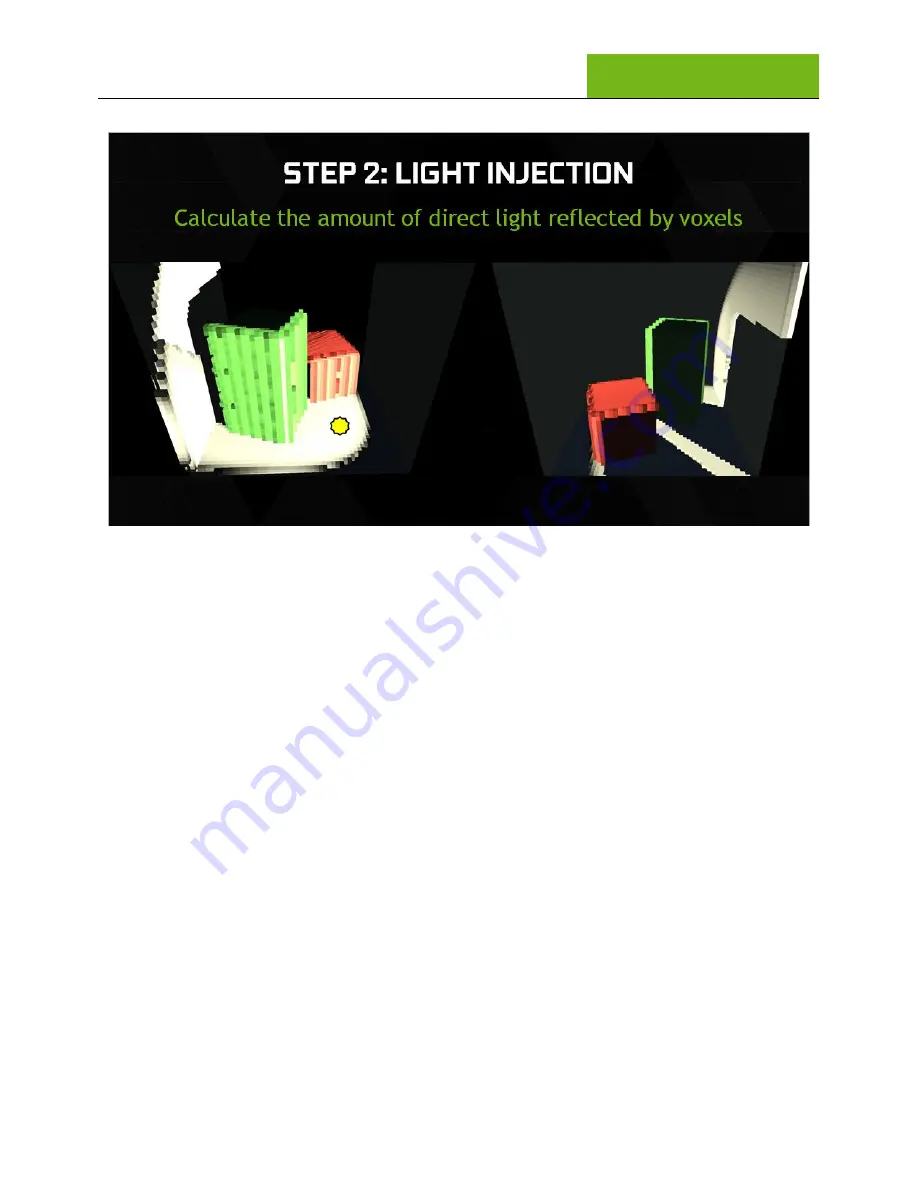
GeForce GTX 980 Whitepaper
MAXWELL: ENABLING THE NEXT
FRONTIER IN PC GRAPHICS
18
Figure 9: Results of light injection
After these steps, we now have a complete voxel data structure representing the lighting information in
the scene.
The next and final step is to rasterize the scene. This step is largely the same as it would be for a scene
rendered with other lighting approaches; the main difference is that the final rasterization and lighting
now has a new and more powerful data structure (the voxel data structure) that it can use in its lighting
calculations, along with other structures such as shadow maps.
The approach of calculating indirect lighting during the final rendering pass of VXGI is called cone
tracing. Cone tracing is an approximation of the effect of secondary rays that are used in ray tracing
methods. Using cones results in very realistic approximations of global illumination at a much lower
computational cost than standard ray tracing.

